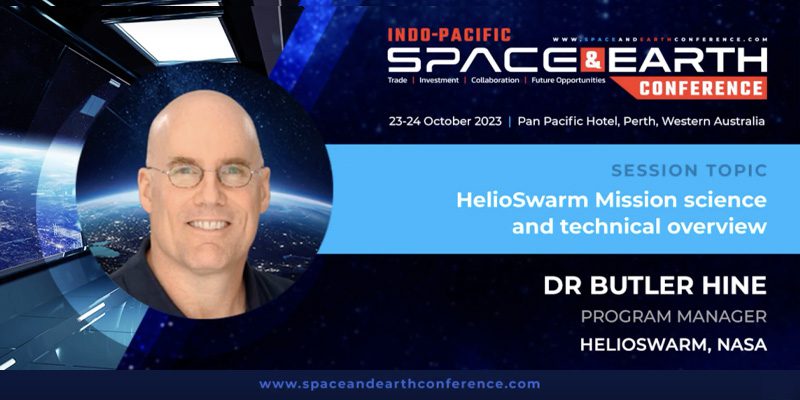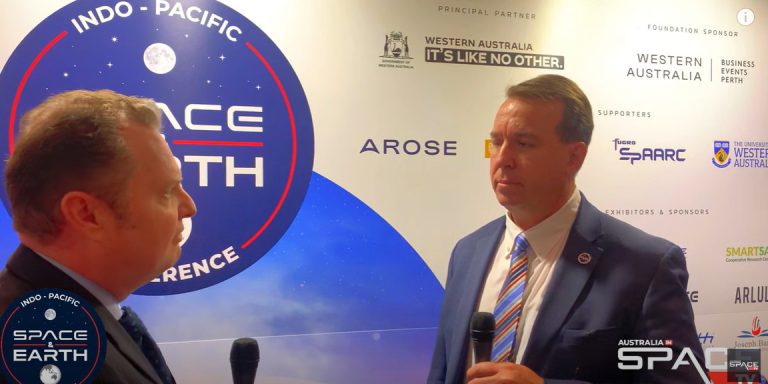Although rare on Earth, the predominant form of visible matter across the universe is plasma. From the auroras that grace our poles, to stars and cosmic nebulae and even solar wind, plasma stands as the most prevalent visible state of matter.
NASA – National Aeronautics and Space Administration‘s HelioSwarm project embarks on a quest to unravel the mysteries of this enigmatic state of matter, which comprises a staggering 99% of the observable universe.
At the Indo-Pacific Space and Earth Conference, Dr. Butler Hine, Project Manager of the mission at NASA Ames Research Center will be expanding and updating us on the project – investigating space plasma turbulence using simultaneous, multi-scale observations from multiple spacecraft.
A development of a suite, or swarm, of nine spacecraft will observe turbulence in the solar wind — charged particles released from the Sun — and the interplanetary magnetic field. One large spacecraft, known as the “hub,” and eight smaller spacecraft, called the “nodes,” will co-orbit to monitor the ever-changing turbulence in space to reveal for the first time how these variations look in three dimensions and how they evolve.
Dr. Hine will present the mission architecture, along with a summarised concept of operations. He’ll also include an exploration of the pathfinding nature of HelioSwarm and implications for future large scientific swarms.
Watch his interview here with our Executive Editor Chris Cubbage on the status of the mission so far and the challenges they are facing. We look forward to welcoming Dr. Hine at the Indo-Pacific Space and Earth Conference.











